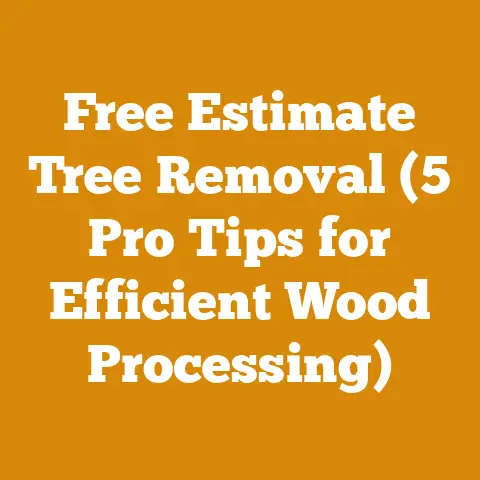What to Do After Tree Stump Grinding (Pro Cleanup Tips)
Let’s get started!
Safety First: The Golden Rule of Stump Grinding Cleanup
Before we even think about cleaning up after stump grinding, let’s talk safety. I can’t stress this enough: this isn’t just about tidying up; it’s about protecting yourself and others. We’re dealing with potentially hazardous debris, and a little caution goes a long way.
- Personal Protective Equipment (PPE): This is non-negotiable. Think sturdy work boots (steel-toed if you have them), safety glasses or goggles (to protect against flying debris), gloves (to protect your hands from splinters and potential irritants), and hearing protection (especially if the stump grinder is still nearby). A dust mask or respirator is crucial, as the ground stump material can be quite dusty and potentially contain allergens or mold spores. I once skipped the dust mask during a cleanup and regretted it for days – trust me, it’s not worth the itchy eyes and coughing!
- Assess the Area: Before you start moving anything, take a good look around. Are there any exposed roots that could be tripping hazards? Are there any underground utilities marked? Is the ground stable? Make sure the area is safe to work in.
- Sharp Objects: Be vigilant for any pieces of metal from the stump grinding process. Sometimes, old fences, nails, or even fragments of the stump grinder itself can get mixed in with the debris.
- Communication: If you’re working with others, make sure everyone knows the plan and is aware of potential hazards. A simple “heads up!” can prevent accidents.
- First Aid: Have a basic first aid kit readily available. Splinters, scrapes, and minor cuts are common, and it’s always better to be prepared.
With safety covered, let’s dive into the heart of the matter: what to do after tree stump grinding.
What to Do After Tree Stump Grinding (Pro Cleanup Tips)
So, you’ve conquered that pesky tree stump with a grinder. Congratulations! But the job isn’t quite finished. Now comes the cleanup, which is arguably just as important as the grinding itself. A proper cleanup ensures the area is safe, aesthetically pleasing, and ready for whatever you have planned next – whether it’s planting grass, building a patio, or something else entirely.
Understanding the Mess: What You’re Dealing With
Before we get into the nitty-gritty, let’s understand what we’re cleaning up. Stump grinding leaves behind a mixture of:
- Wood Chips: The bulk of the debris. These are essentially small pieces of the stump that have been shredded by the grinder.
- Soil: The grinding process inevitably mixes in soil from around the stump.
- Root Material: Smaller roots that were close to the surface will also be ground up.
- Rocks and Debris: Depending on the location, you might find rocks, small stones, or other debris mixed in.
- Sawdust: Fine particles of wood dust created during the grinding process.
The composition of this mixture will vary depending on the type of tree, the soil conditions, and the depth to which the stump was ground. Knowing what you’re dealing with will help you choose the right cleanup strategy.
Step-by-Step Cleanup Guide: From Mess to Masterpiece
Here’s a detailed, step-by-step guide to cleaning up after stump grinding, based on my experience and the best practices I’ve learned over the years:
1. Initial Assessment and Planning
Before you even pick up a shovel, take a step back and assess the situation. Ask yourself these questions:
- What’s the end goal for this area? Are you planning to plant grass, build a structure, or simply level the ground? Your end goal will dictate how thorough your cleanup needs to be.
- How deep was the stump ground? This will determine the volume of debris you need to deal with. Ideally, the stump should be ground at least 6-12 inches below the surface to allow for planting or construction.
- What’s the drainage like in this area? Poor drainage can lead to problems with settling and decomposition.
- Are there any nearby structures or utilities that could be affected by the cleanup process?
Once you have a clear understanding of the situation, you can create a cleanup plan.
2. Gather Your Tools and Materials
Having the right tools for the job will make the cleanup process much easier and more efficient. Here’s a list of essential tools and materials:
- Shovels: A round-point shovel for digging and moving large amounts of debris, and a square-point shovel for leveling and spreading.
- Rakes: A leaf rake for gathering loose debris and a garden rake for leveling and smoothing the soil.
- Wheelbarrow: For transporting debris away from the area.
- Broom: For sweeping up loose debris from paved surfaces.
- Gloves: As mentioned earlier, gloves are essential for protecting your hands.
- Safety Glasses or Goggles: Protect your eyes from flying debris.
- Dust Mask or Respirator: Protect your lungs from dust and allergens.
- Water Hose: For wetting down the area to reduce dust and help with compaction.
- Topsoil: For filling in any depressions and providing a good base for planting.
- Compost: For enriching the soil and promoting healthy plant growth.
- Seed or Sod: Depending on your landscaping plans.
- Level: To ensure the ground is level and even.
- Optional: Sifter or Screen: For removing rocks and large debris from the soil.
3. Remove Large Debris
Start by removing any large pieces of wood, rocks, or other debris from the area. Use your shovel and wheelbarrow to transport the debris to a designated disposal area.
4. Separate Wood Chips from Soil
This is where things can get a bit tedious, but it’s an important step if you want to prepare the area for planting. The goal is to separate as much of the wood chips from the soil as possible. Here are a few methods you can use:
- Manual Separation: Use your shovel and rake to carefully separate the wood chips from the soil. This is the most labor-intensive method, but it’s also the most effective.
- Sifting: Use a sifter or screen to separate the wood chips from the soil. This is a good option if you have a lot of debris to process. You can build a simple sifter using a wooden frame and wire mesh, or you can purchase a commercial sifter.
- Tarp Method: Spread a large tarp on the ground and dump the debris onto the tarp. Then, carefully lift the edges of the tarp to allow the soil to fall through, leaving the wood chips behind.
A Personal Anecdote: I once tried to skip this step and planted grass directly into a mixture of wood chips and soil. The result was a patchy, uneven lawn that took years to recover. Lesson learned: take the time to separate the wood chips!
5. Dispose of the Wood Chips
Once you’ve separated the wood chips from the soil, you need to dispose of them properly. Here are a few options:
- Composting: Wood chips can be a valuable addition to your compost pile. They provide carbon, which is essential for healthy compost. However, be aware that wood chips can take a long time to decompose, so it’s best to mix them with other materials like leaves, grass clippings, and food scraps.
- Mulching: Wood chips can be used as mulch around trees, shrubs, and flower beds. Mulch helps to retain moisture in the soil, suppress weeds, and regulate soil temperature.
- Landfill: If you don’t have a use for the wood chips, you can dispose of them at your local landfill. However, be aware that some landfills charge a fee for disposing of wood waste.
- Give them away: Many gardeners and landscapers are happy to take wood chips off your hands. You can advertise them online or through local community groups.
6. Fill the Hole
After removing the wood chips, you’ll likely be left with a hole in the ground. Fill the hole with a mixture of topsoil and compost. The exact ratio will depend on the quality of your soil, but a good starting point is 2 parts topsoil to 1 part compost.
7. Compact the Soil
Use a tamper or roller to compact the soil. This will help to prevent settling and ensure a stable base for planting or construction. If you don’t have a tamper or roller, you can simply walk over the area repeatedly, applying pressure with your feet.
8. Level the Ground
Use a rake to level the ground and remove any bumps or depressions. A level can be helpful to ensure the ground is perfectly even.
9. Water the Area
Water the area thoroughly to help the soil settle and compact. This will also help to reveal any low spots that need to be filled in.
10. Add Topsoil and Seed or Sod (If Applicable)
If you’re planning to plant grass or other vegetation, add a layer of topsoil and seed or sod according to the instructions on the package. Water the area regularly to promote healthy growth.
11. Clean Up Your Tools
Once you’re finished, clean up your tools and store them properly. This will help to prolong their lifespan and ensure they’re ready for your next project.
Dealing with Specific Challenges
Sometimes, the cleanup process isn’t as straightforward as the steps outlined above. Here are a few common challenges and how to overcome them:
- Rocky Soil: If your soil is particularly rocky, you may need to use a sifter or screen to remove the rocks before filling the hole. This can be a time-consuming process, but it’s essential for creating a good base for planting.
- Poor Drainage: If the area has poor drainage, you may need to install a drainage system before filling the hole. This could involve installing a French drain or a perforated pipe to divert water away from the area.
- Large Roots: If there are still large roots remaining after the stump grinding, you may need to cut them back with a saw or axe before filling the hole. Be careful not to damage any nearby utilities.
- Steep Slope: If the area is on a steep slope, you may need to build a retaining wall or terrace to prevent erosion.
Cost Considerations
The cost of cleaning up after stump grinding will vary depending on the size of the stump, the amount of debris, and the complexity of the project. Here’s a breakdown of potential costs:
- Tools and Materials: Shovels, rakes, wheelbarrow, topsoil, compost, seed or sod: $50 – $200
- Equipment Rental: Sifter, tamper, roller: $20 – $50 per day
- Disposal Fees: Landfill fees for wood chips and debris: $0 – $50 per load
- Labor: If you hire someone to do the cleanup for you, expect to pay $50 – $100 per hour.
Budgeting Tip: Shop around for the best prices on topsoil, compost, and seed or sod. You can often save money by buying in bulk.
Case Study: From Stump to Stunning Garden
I once helped a friend clean up after stump grinding in her backyard. The stump was from a large oak tree that had been removed due to disease. The area was a mess of wood chips, soil, and rocks.
We started by removing the large debris and sifting the soil to remove the rocks. Then, we filled the hole with a mixture of topsoil and compost and compacted the soil. We added a layer of topsoil and planted a variety of flowers and shrubs.
The result was a stunning garden that transformed the backyard. My friend was thrilled with the outcome, and it was a rewarding experience for me as well.
Key Takeaway: With a little effort and planning, you can transform a stump-filled mess into a beautiful and functional space.
Long-Term Maintenance
Once you’ve cleaned up after stump grinding and planted grass or other vegetation, it’s important to maintain the area to ensure healthy growth and prevent problems. Here are a few tips:
- Water Regularly: Water the area regularly, especially during dry periods.
- Fertilize: Fertilize the soil as needed to promote healthy growth.
- Weed Control: Remove weeds regularly to prevent them from competing with your plants for nutrients and water.
- Mulch: Apply a layer of mulch around your plants to help retain moisture, suppress weeds, and regulate soil temperature.
- Monitor for Settling: Keep an eye on the area for any signs of settling. If you notice any depressions, fill them in with topsoil.
Troubleshooting Common Problems
Even with the best planning, things can sometimes go wrong. Here are a few common problems you might encounter during the cleanup process and how to troubleshoot them:
- Standing Water: If water is pooling in the area after rain, it could be a sign of poor drainage. Consider installing a drainage system to divert water away from the area.
- Soil Erosion: If the soil is eroding, it could be a sign that the area is not properly compacted or that there is not enough vegetation to hold the soil in place. Consider adding more topsoil and planting more vegetation.
- Poor Plant Growth: If your plants are not growing well, it could be a sign that the soil is not fertile enough or that they are not getting enough water or sunlight. Consider fertilizing the soil and adjusting your watering schedule.
- Wood Chip Decomposition: Over time, the remaining wood chips in the soil will decompose. This can cause the soil to settle and create depressions. Fill in any depressions with topsoil as needed.
The Global Perspective: Wood Processing and Firewood Trends
Globally, the wood processing and firewood industries are seeing significant shifts. There’s a growing emphasis on sustainable forestry practices, with increased demand for responsibly sourced wood. The use of advanced technologies, like computerized logging equipment and automated firewood processors, is becoming more prevalent, particularly in developed countries.
Data Point: According to a report by the Food and Agriculture Organization of the United Nations (FAO), global production of wood pellets, a popular form of firewood, has increased by over 400% in the last decade.
In many developing countries, firewood remains a primary source of energy for cooking and heating. However, unsustainable harvesting practices can lead to deforestation and environmental degradation. There’s a growing need for education and training on sustainable firewood harvesting techniques.
From Green Wood to Seasoned Fuel: The Art of Firewood Preparation
Let’s shift gears to the fascinating world of firewood preparation. Understanding the difference between green wood and seasoned wood is crucial for efficient and safe burning.
- Green Wood: This is freshly cut wood that contains a high moisture content, typically above 50%. Burning green wood produces a lot of smoke, creosote (a flammable substance that can build up in your chimney), and less heat.
- Seasoned Wood: This is wood that has been dried for a period of time, typically 6-12 months, to reduce its moisture content to below 20%. Seasoned wood burns cleaner, produces more heat, and reduces the risk of chimney fires.
Key Concept: The goal of seasoning firewood is to remove moisture from the wood cells. This is achieved through a process called evaporation, which is influenced by factors like temperature, humidity, and airflow.
The Seasoning Process: A Step-by-Step Guide
- Split the Wood: Splitting the wood exposes more surface area, which speeds up the drying process.
- Stack the Wood: Stack the wood in a single row, allowing for good airflow around each piece.
- Elevate the Wood: Elevate the wood off the ground using pallets or other supports to prevent moisture from wicking up from the ground.
- Cover the Top: Cover the top of the woodpile with a tarp or other waterproof material to protect it from rain and snow.
- Allow Time to Season: Allow the wood to season for at least 6-12 months, depending on the type of wood and the climate.
Wood Species and Firewood Quality:
Different types of wood have different burning characteristics. Here’s a quick overview:
- Hardwoods (e.g., Oak, Maple, Ash): These woods are dense and burn slowly, producing a lot of heat. They are ideal for long-lasting fires.
- Softwoods (e.g., Pine, Fir, Spruce): These woods are less dense and burn quickly, producing less heat. They are better suited for starting fires or for use in stoves that require a quick burst of heat.
Data Point: Oak has a BTU (British Thermal Unit) rating of approximately 28 million per cord, while pine has a BTU rating of approximately 20 million per cord. This means that oak produces significantly more heat than pine.
Chainsaws vs. Both tools have their advantages and disadvantages.
- Chainsaws: Chainsaws are powerful and efficient for cutting large logs into smaller pieces. However, they can be dangerous if not used properly.
- Axes: Axes are simpler and safer to use than chainsaws, but they require more physical effort.
Tool Selection Tip: For felling trees and cutting large logs, a chainsaw is the best choice. For splitting smaller logs and kindling, an axe is a better option.
Next Steps and Additional Resources
Congratulations! You’ve now learned the ins and outs of cleaning up after stump grinding and preparing firewood. Here are a few next steps you can take:
- Practice your skills: Get out there and start cleaning up after stump grinding and preparing firewood. The more you practice, the better you’ll become.
- Join a local woodworking or logging club: This is a great way to learn from experienced professionals and network with other enthusiasts.
- Read books and articles on wood processing and firewood preparation: There’s a wealth of information available online and in libraries.
- Visit your local hardware store or forestry supply store: Check out the latest tools and equipment and talk to the experts.
Here are a few additional resources that you may find helpful:
- Suppliers of Logging Tools: Baileys, Forestry Suppliers, Northern Tool
- Drying Equipment Rental Services: Sunbelt Rentals, United Rentals
- Local Arborists and Tree Services: Search online for tree services in your area.
Remember, safety is always the top priority. Take your time, be careful, and have fun! And don’t be afraid to get your hands dirty – that’s part of the adventure. Now, go forth and conquer those stumps and firewood piles! You’ve got this!






